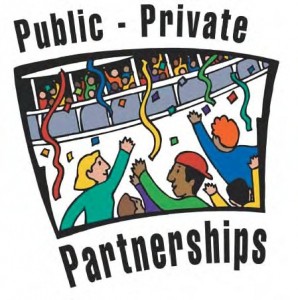 Owing to constrained investment, the education sector is unable to cope with growing market demand and global competition. Increased private investment is thus imperative to expand infrastructure and provide greater access to quality higher education in India. E&Y – FICCI report emphasises that PPPs could be an effective
Owing to constrained investment, the education sector is unable to cope with growing market demand and global competition. Increased private investment is thus imperative to expand infrastructure and provide greater access to quality higher education in India. E&Y – FICCI report emphasises that PPPs could be an effective
mechanism for attracting much needed private sector investment in the Indian Higher education system without diluting the regulatory oversight of the Government and other regulators
India’s enrollment figures in higher education emain abysmally low at a mere 11 compared to that of the US and Canada, where over 60 % of college-age students access higher education, highlighting that publicprivate partnerships are critical for wooing investment in India’s higher education system. This shortfall in the number of young who re eligible for higher education and the existing infrastructure presents India’s unique hallenge, in terms of the sheer scale of its population. India has over 400 universities and more than 20,000 colleges with an enrollment of 14 million students, yet it is grossly nadequate. A recently unveiled report by Ernst & Young and FICCI on various aspects of PPP, ighlights some pointers to possible solutions to challenges faced in by the nation’s ducation sector. Gaping resource gap The Government of India has allocated INR 850 billion or higher education in the 11th Five Year Plan. However, considering that the Planning Commission has identified a resource gap of INR 2.2 trillion, it is unlikely that the overnment alone can address infrastructure needs in the higher education sector in the near uture. While public expenditure on education has increased, the percentage share of Gross Domestic Product (GDP) spent on higher education has come down from 0.77% in 1991 o 0.7% in 2008. Moreover, there is an unequal outlay f resources for Higher Educational Institutions across the Indian states. Partnership models in education The report presents asic modes of partnerships that are possible between the government and the private sector. artnerships are established for varied reasons including construction, financing, design and aintenance of public infrastructure. PPP in social sectors such as health and education are ometimes referred to as Public- Social Private Partnership (PSPP). A number of PPP models can exist that range from simple management contracts to BOOT formats. These formats ary n the kind of benefits they yield. The report provides case studies of different types of PPP arrangements in education such as: Public-private financing of higher education Science/research parks University-owned companies The report underscores certain challenges that can be expected while applying the PPP model to education. For instance, the igh cost of such projects, relatively lower returns, and the current regulatory landscape akes it difficult to attract participants/ bidders for education projects. Another challenge is the lack f familiarity with the PPP procurement process. The report suggests measures that can be implemented to avoid these hurdles. The process of attracting bidders should be framed to inimise the bid costs with effective competition. Also, the university/college can be protected by way of monitoring the services offered by private players. Certain cases of successful PPP rojects in the education sector from other countries have been cited as examples, such as: Southbank Educational and Training Precinct Development involved the development of high standard facilities for the , Southbank Educational and Training Precinct Royal orthern College of Music in the UK which involved development of about 160 study rooms, staff and uest accommodation, car parking facility and a walkway. Industry-academia collaboration may include companies and institutes conducting joint R&D, industry internships, and corporates training and certifying students of affiliated institutes. Lastly, foreign university collaborations can offer access to world class faculty and international students, curriculum ased on global standards and sharing of culture. These may take the shape of exchange programmes, joint research projects or sharing of infrastructure facilities.
Regulatory ramework
for PPP An Higher Education Institute in India can be set up as a Trust, Society or as a Company registered under Section 25 of the Companies Act, 1956 (though the last is not ecognised by the HRD Ministry). Several regulatory bodies regulate the functioning of higher education in India. These comprise the University Grants Commission (UGC), All India ouncil for Technical Education (AICTE), Medical Council of India, etc. The higher education ystem suffers from several challenges that act as a hurdle in the growth ofthe PPP concept in ndia. These include the conditions imposed for setting up the educational institute as a not-for- rofit entity; xcessive regulations in the functioning of the HEIs and for the entry of oreign educational institutions into India. Despite these challenges, the PPP concept in the education sector needs to be explored. Since there are regulations with • respect to being a ot-for-profit entity, the infrastructure for educational institutions can be created through the PPP model. This could involve creation of a Trust by the Government/ HEIs to offer education ervices, which collaborates with a private player to avail infrastructure like uildings, hostels, laboratories, etc. This kind of a model would uphold the regulations imposed on educational institutions as well as leverage the partnership between the government and he private sector.
Findings
As a conclusion the report underscores the challenges that India’s igher education sector faces and calls for focused initiatives for remedial action, like targeted nterventions for increasing enrollment rates. It is also clear that the expansion of the higher ducation system in India would not be possible without sufficient levels of private sector funding, states the report, while adding that a clear gap exists in the availability of this rivate sector funding. It emphasises that there is a need to look at partnerships to create progress on this front in the near term,





















